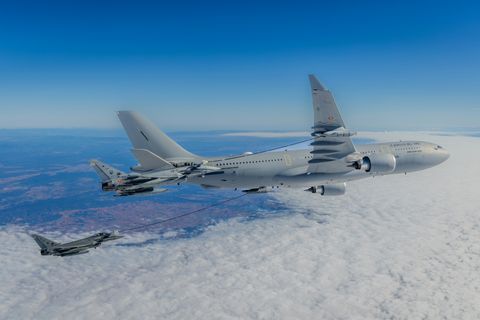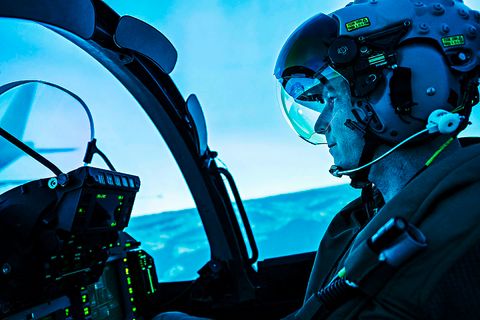A310 MRTT test-bed retires after pioneering air-to-air refuelling

From the initial studies of the boom refuelling system to today's A330 MRTT, the world's first tanker certified for automatic air-to-air refuelling, the A310-300 MRTT (MSN489) has served as a test-bed for more than 350 flight tests over the past two decades.
It will now be replaced by an A330-200, MSN 655, which arrived at the Airbus facilities in Getafe, Spain, at the end of May. The new Flying Test Bed will be converted into an MRTT to support Airbus' product evolution strategy, as was the case with the A310 MRTT.

The new A330-200 FTB on its arrival at the Airbus Defence and Space facilities in Getafe.
The A310 helped to develop the original boom demonstrator, but also paved the way for the certification of the automatic air-to-air refuelling system and it went to the next level with the autonomous refuelling system through the Auto'Mate trials. However, it is not only about refuelling, but also new connectivity developments, System of Systems or Space-related solutions.
The boom demonstrator case
In 2000, EADS Military Transport Aircraft (MTA), at that time, assumed responsibility for all Airbus military transport aircraft derivatives and launched its own study for a boom aerial refuelling system in November 2001. Airbus introduced new technologies, such as electrical actuators, a hoist, flight controls, a high-resolution digital vision system and new capabilities, such as a 1,200 US-gallons-per-minute fuel-flow rate, dual redundancy and envelope protection.
In 2004, in order to carry out all types of development and qualification tests on the boom system before installing it on an aircraft, a full-scale Boom Test Rig was built in Getafe (Madrid).
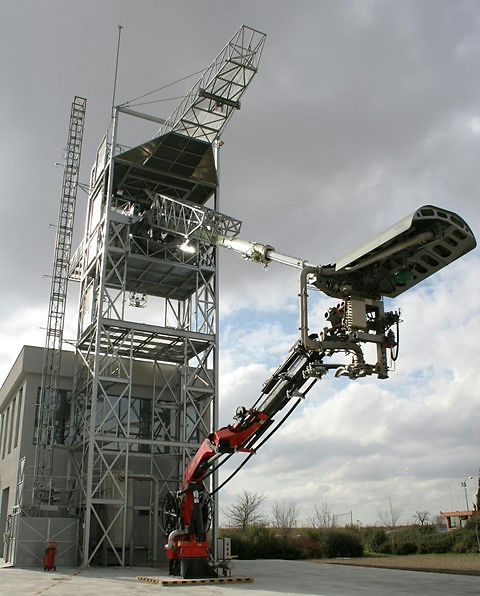
The entire flight-test phase of the programme was carried out using the A310 Flying Test Bed, dubbed the "Boom Demonstrator", fitted with the Aerial Refuelling Boom System (ARBS), which made its maiden flight on 16 March, 2006.
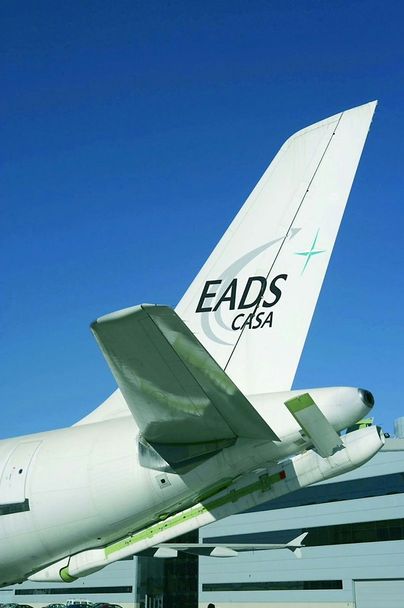
Located underneath the rear fuselage of the tanker aircraft, the boom mast was remotely controlled from an Air Refuelling Console in the flight deck, where an Air Refuelling Operator used an advanced technology 2D/3D high-definition/digital Enhanced Vision System. The ARBS was equipped with an all-electrical and full fly-by-wire flight control system. It was provided with an automatic load-alleviation system, and had an autonomous disconnect.
On 30 March, 2006, the first phase of the ARBS flight-test programme was successfully completed after three years of development. The A310 Boom Demonstrator aircraft performed on 30 January, 2007, its 12th test flight and the boom was successfully deployed for the first time.
A310 MRTT Despliegue Boom
The boom mast was deployed for the first time on progressive steps from stowed position to its nominal trail position and hoist and extension/retraction actuation systems performed successfully.
15 facts about the A310 test-bed
1. Originally operated by Air Comet, the A310-300 (MSN489) joined the Airbus fleet in September 2003.
2. In March 2006 the aircraft made its first flight as an MRTT demonstrator and it was converted into a Flying Test Bed.
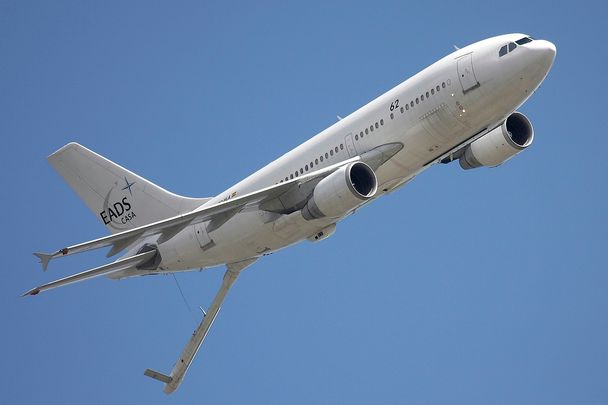
3. The aircraft has reached 60,000 flight hours in total, counting 1,150 as a test-bed in 353 flight tests.
4. In January 2007 the boom was successfully deployed during a flight for the first time.
5. In 2012 it was certified with the new A330 MRTT standard. Originally painted white with the former EADS-CASA logo, the livery became grey at that time, incorporating the new Airbus Defence and Space logo.
6. The first dry contact between the A310 Boom Demonstrator and a Portuguese F-16 through the ARBS occurred on 10 December, 2007.
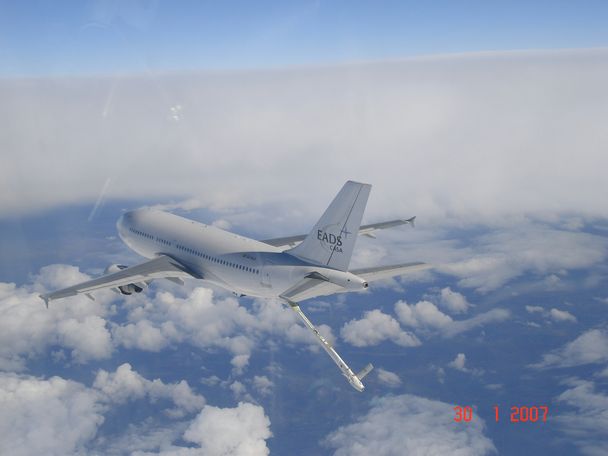
7. The first wet contact was performed in March 2008 with a Portuguese Air Force 201 Squadron F-16AM Fighting Falcon.
8. In July 2008 was performed the dry contact of a French Air Force EDCA 36 Squadron E- 3F AWACS.
9. In January 2009 was performed the first dry contact of the Royal Australian Air Force A330 MRTT through the Universal Aerial Refuelling Receptacle Slipway Installation (UARRSI).
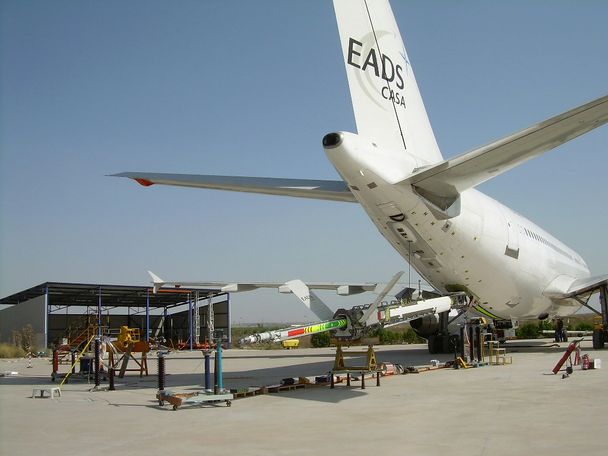
10. In July 2009 was performed a first night refuelling with a Portuguese F-16. This validation confirmed the performance of the ARBS’ state-of-the-art, enhanced-vision system and the ability to refuel during adverse weather/night conditions.
11. The test and evaluation programme using the A310 Boom Demonstrator was successfully completed after 267 contacts with the KC-30A (RAAF A330 MRTT), 181 with F-16As and five with an E-3F AWACS.
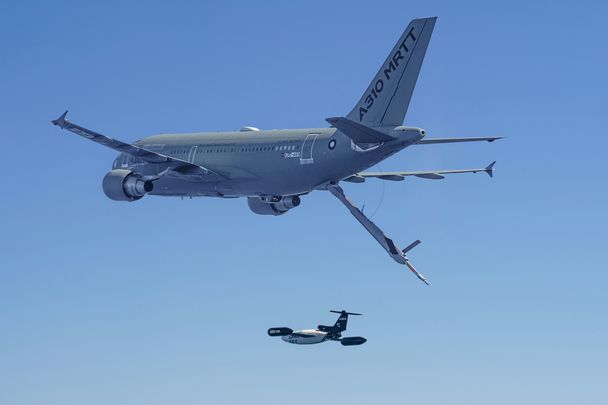
12. The aircraft played a key role during Automatic air-to-air refuelling (A3R) as well as Autonomous air-to-air refuelling (A4R) flight-test campaigns.
13. Germany and Canada have been A310 operators in MRTT configuration. The German A310 MRTT and Canadian CC-150T Polaris (local designation) fleets have been involved in fighter deployments, troop rotations, medical evacuations and humanitarian/natural-disaster relief operations all over the world.
14. The first German A310 MRTT was rolled out on 9 December 2003 in Dresden.
15. Apart from civilian customers, it is used by the Spanish Air Force as a VIP and personnel carrier, the German Luftwaffe and the Canadian Air Force, as well as for Airbus’ own test-bed until now.
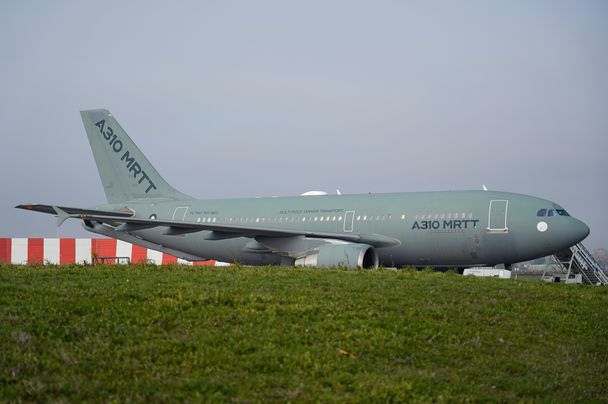
A bit of history of the A310
The A310 was conceived as a shorter derivative of the A300. It had a reduced fuselage length, with capacity for 200 passengers, redesigned wing and smaller drift.
Developed at the request of Lufthansa and Swissair, it was introduced by Airbus in July, 1978, producing 255 units, the last delivered in June, 1998.
The A310 horizontal stabiliser was the first for which CASA was responsible for design (the A300 was designed in Germany). It was designed in 1983.
The A310-300 version (introduced in July, 1985, with increased maximum take-off weight and longer range) also introduced winglets. It was called Trim-Tank, as it included an integral fuel tank, which allowed the aircraft to be centred by transferring fuel between the main tanks on the wings. It also included deep rudders and carbon fibre nose traps.
You can download some photos and videos of the A310 MRTT test-bed and the new A330 MRTT test-bed here.
Click here for more information on A330 MRTT
